Taliesin West – Travels in Architecture
Posted in Art, Historic, Southwest, Travel | By Shelley Gillespie | Tags: Art, Desert, Southwest, Travel, US Domestic Travel
Frank Lloyd Wright is an iconic figure in the world of architecture. His buildings, which blend into the landscape, use geometric shapes to create eye-pleasing designs.
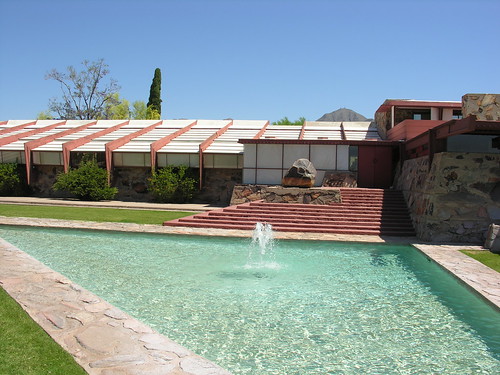
Taliesin West with the pool
A visit to his western headquarters, Taliesin West, in Scottsdale, Arizona provides a glimpse of why his work is so revered. It was ground breaking for its time, as it used unconventional construction methods, unusual building materials and tended to ignore square rooms.
On a recent visit, the short tour (1 hour) provided a glimpse of the outer environment of Taliesin West including the sculpture garden. (Sculptures were all Heloise Crista’s work.)
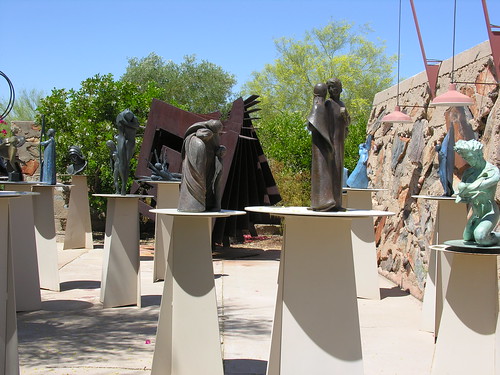
The cabaret, the theater, dining room view, Wright’s office and structural elements are part of the tour I took with our guide, Sandy.
Sandy, plus a tape running in the gift shop, gave visitors a feeling for Wright’s personality, proclivities and activities. He was a dictatorial, charismatic, talented, self-centered and extravagant spender who was married three times.
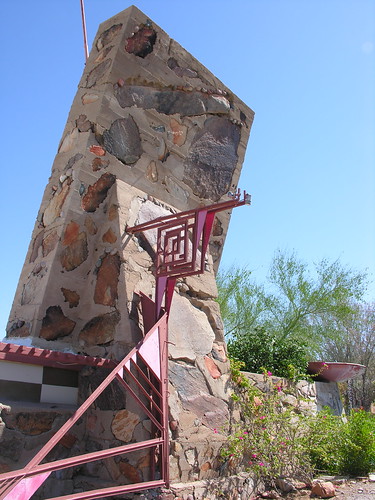
Entrance - Gift Shop
Despite his character flaws, Wright’s talent and cachet as an architect have spread his fame and his legacy. His buildings appear on lists of “bests” for architecture, especially “Fallingwater,” a home designed incorporating a waterfall. He is also known for his design of the Guggenheim Museum in New York City.
Early eco-friendly design
Wright created his buildings as an organic part of the landscape. Taliesin West has segments partially underground, as the cabaret theater. “Taliesin,” meaning “shining brow,” was built at the brow of the hill, not at the top, which Wright felt would ruin the hill.
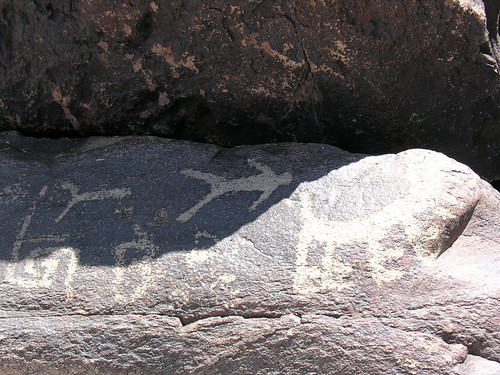
Petroglyphs, ancient artwork etched in stone, at Taliesin West
Having created his own architectural apprenticeship program, Taliesin West was developed with the physical labor of those apprentices. In building a roadway, the apprentices unearthed petroglyphs, which were preserved and incorporated into the landscaping. Salvaging old Chinese porcelain tiles, one of his apprentices reassembled them. In each area of Taliesin, one of these tiles greets visitors.
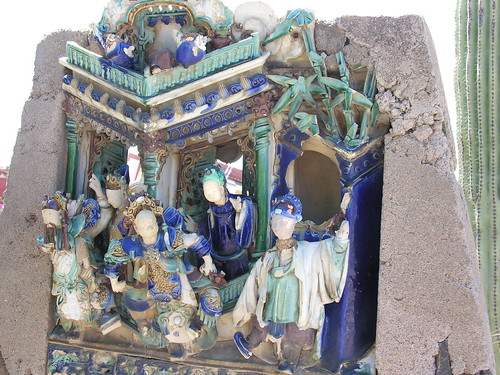
Chinese tiles reconstructed and placed at each entry area
Some of Wright’s efforts to incorporate nature could be problematic. In Wright’s study, he used canvas as his ceiling, which needed yearly replacement. Changes were only allowed if they improved upon longevity.
“Organic architecture” was the term Wright used to describe his design as it was built from the ground. Even though some of his constructs appear rudimentary, the sophistication of his design still has currency today.
Performing
Wright and his wife believed in performing and she required the apprentices to play an instrument. A theater was built as part of the Taliesin complex for those performances. Wright even had his own early movie theater and especially indulged in cowboy movies, particularly those of John Wayne.
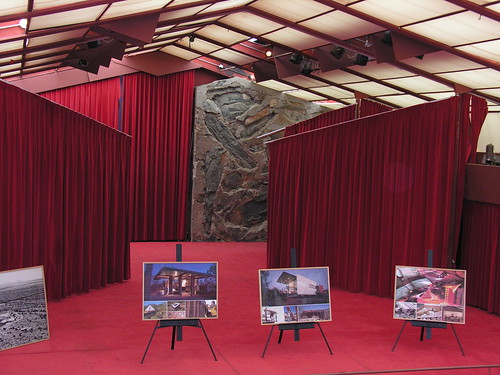
As part of the tour, Sandy brought us to the cabaret theater, inspired by European clubs, and described the perfect acoustics it offered. I volunteered to be the test subject and whispered, stomped and talked, purportedly to be heard in the very back of the cabaret without a microphone. My husband said he did hear me seated halfway back when I whispered.
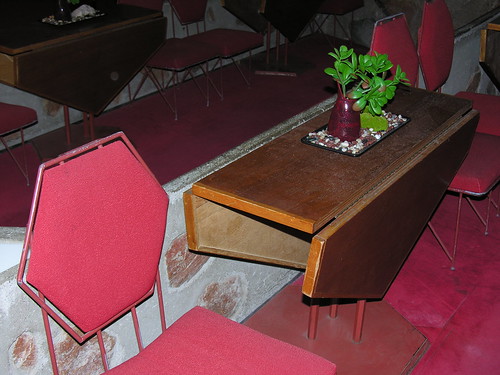
Taliesin West Cabaret - Hexagonal Chair
The cabaret theater was the last stop on our tour, but it provided an excellent example of the many ideas that could be incorporated into a Frank Lloyd Wright design. Sandy showed us how the cabaret seating was angled so people could sit facing the stage even though the rows were angled from the wall. It worked well for right-handed people, but not so well for us left-handed visitors.
Legacy continues
In the gift shop at Taliesin, an array of Wright-inspired gifts and materials are available. Geometrics feature heavily in the designs. An item tucked in one corner of the gift shop is Lincoln Logs, invented by Wright’s son, John Lloyd Wright. The Lincoln Logs designed by John Lloyd Wright probably influenced another generation or two to become fascinated with architecture, as well as his father’s designs.
Worth a visit
If you are interested in what inspired our country’s modern architecture, a visit to Taliesin West is enlightening. The tours, while relatively expensive at $27 per person for a one-hour tour, are unique. There are longer tours at larger fees available as well.
The Frank Lloyd Wright Foundation is diligently trying to preserve Wright’s legacy. And, just think – your tour fee might help finance the replacements that will always be necessary to keep the buildings functioning.
Tags: Art, Desert, Southwest, Travel, US Domestic Travel
